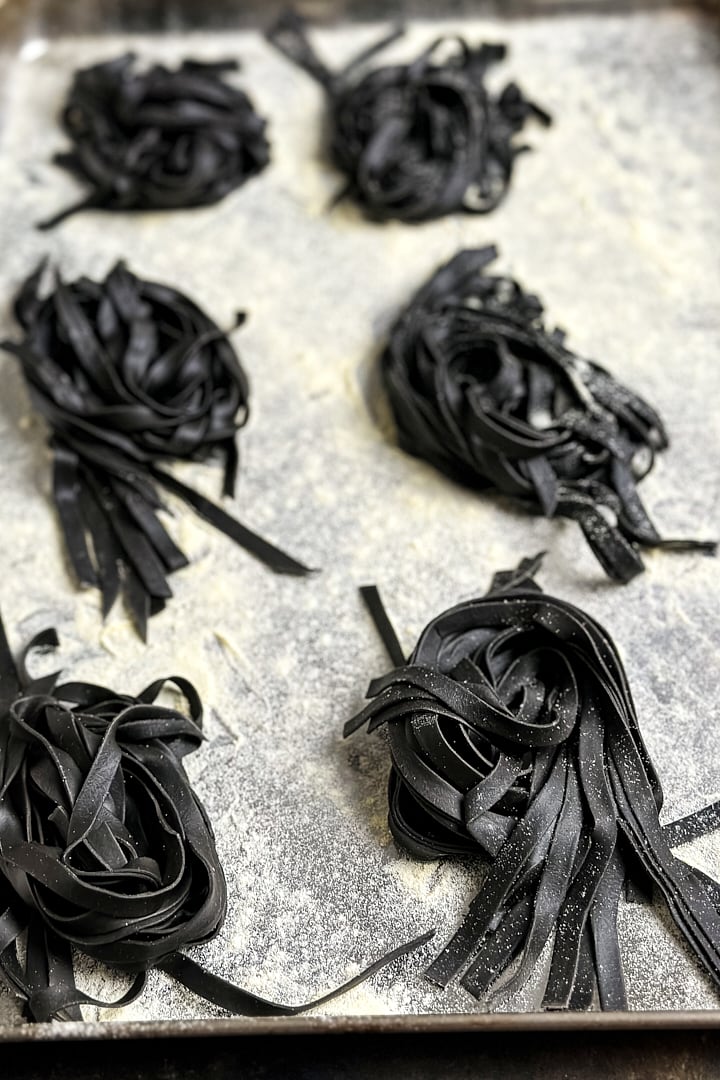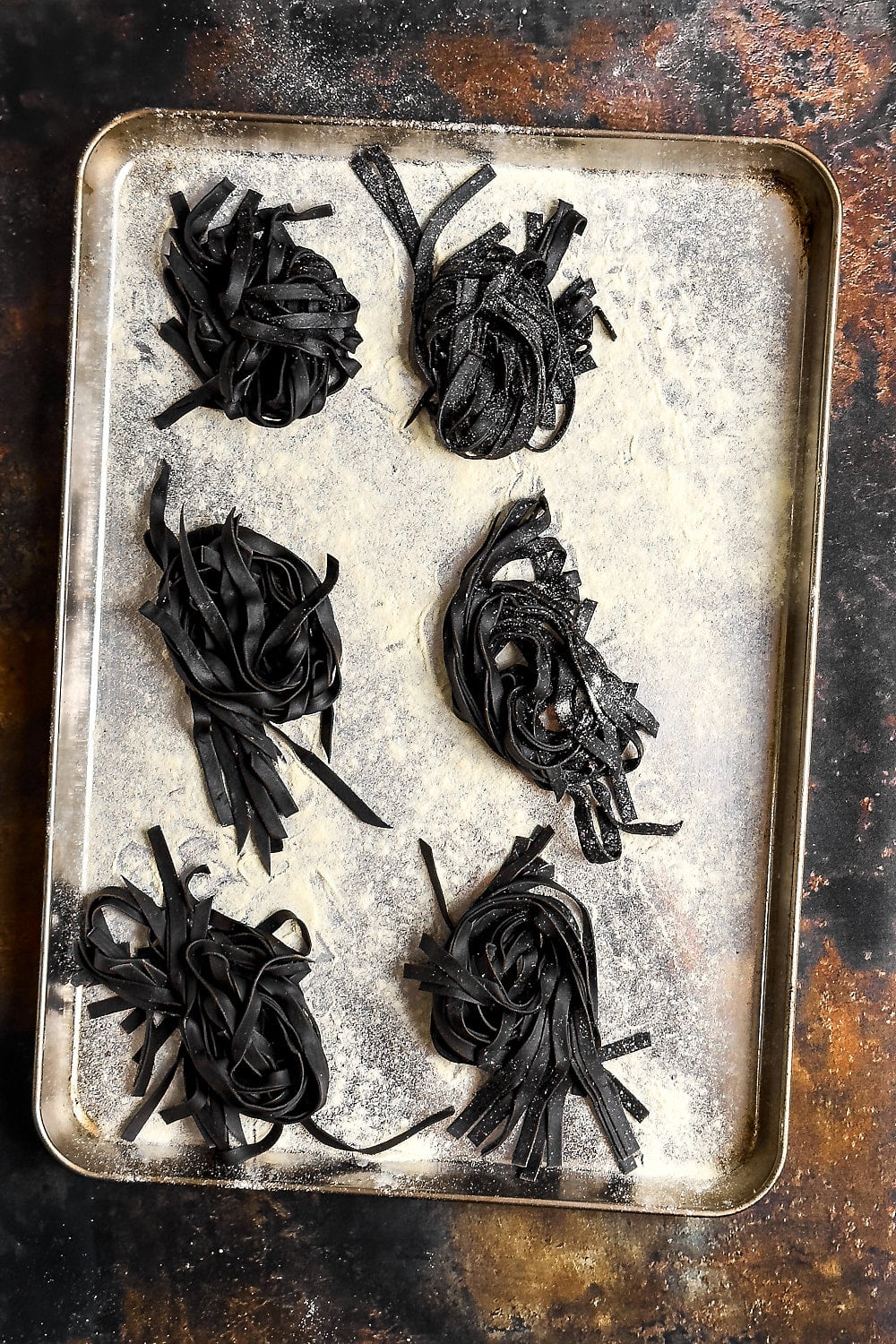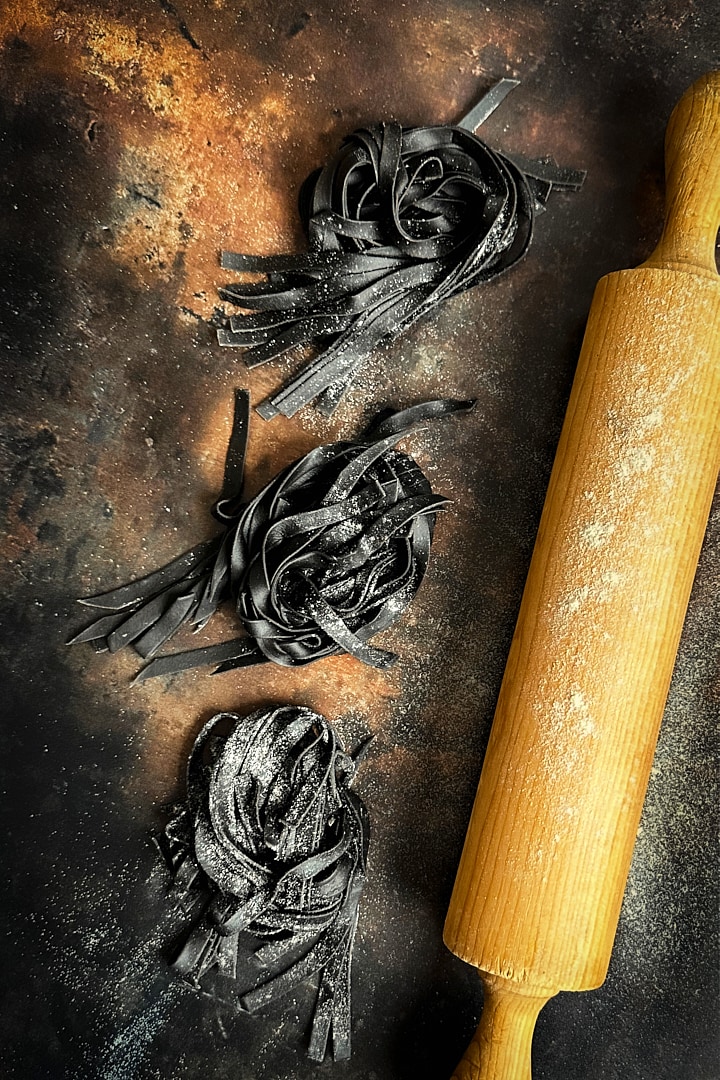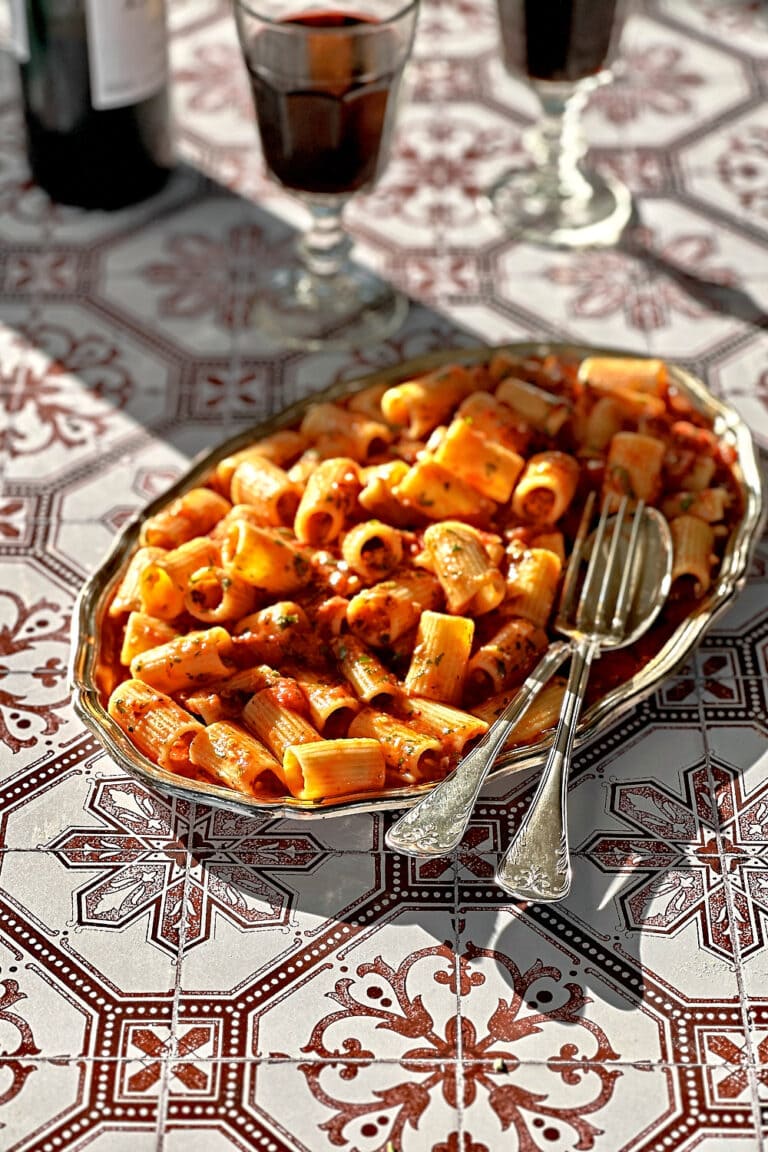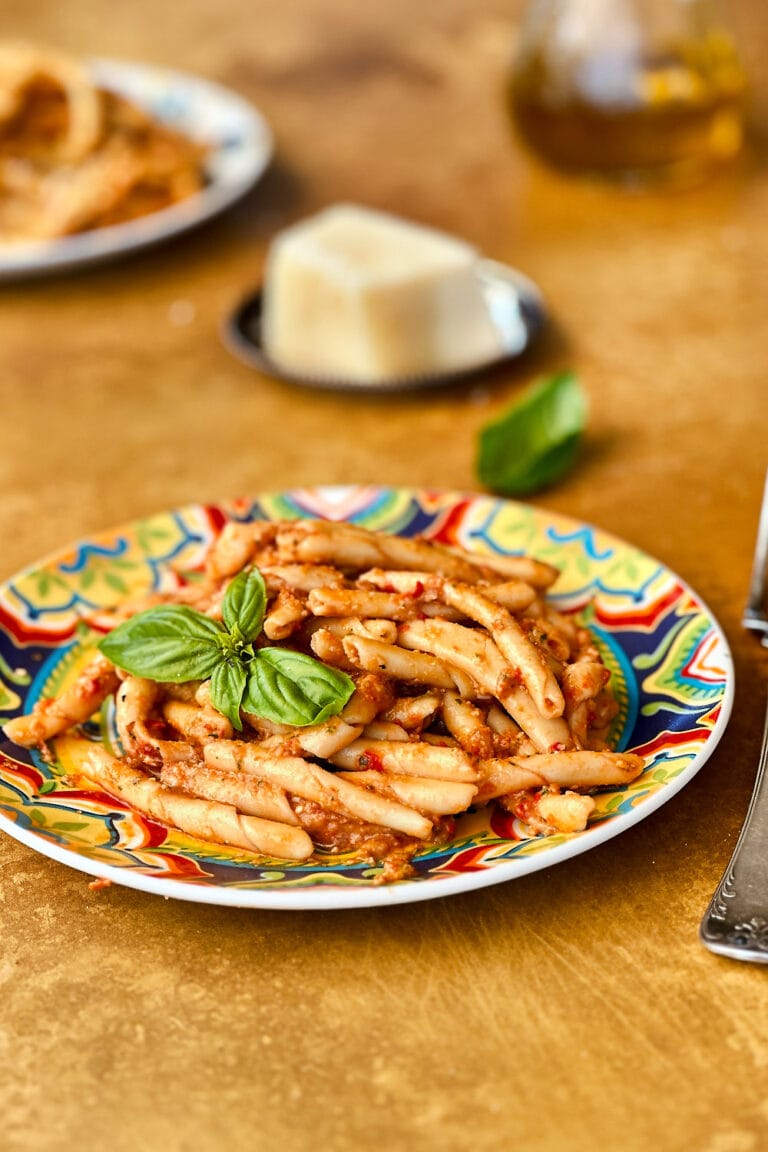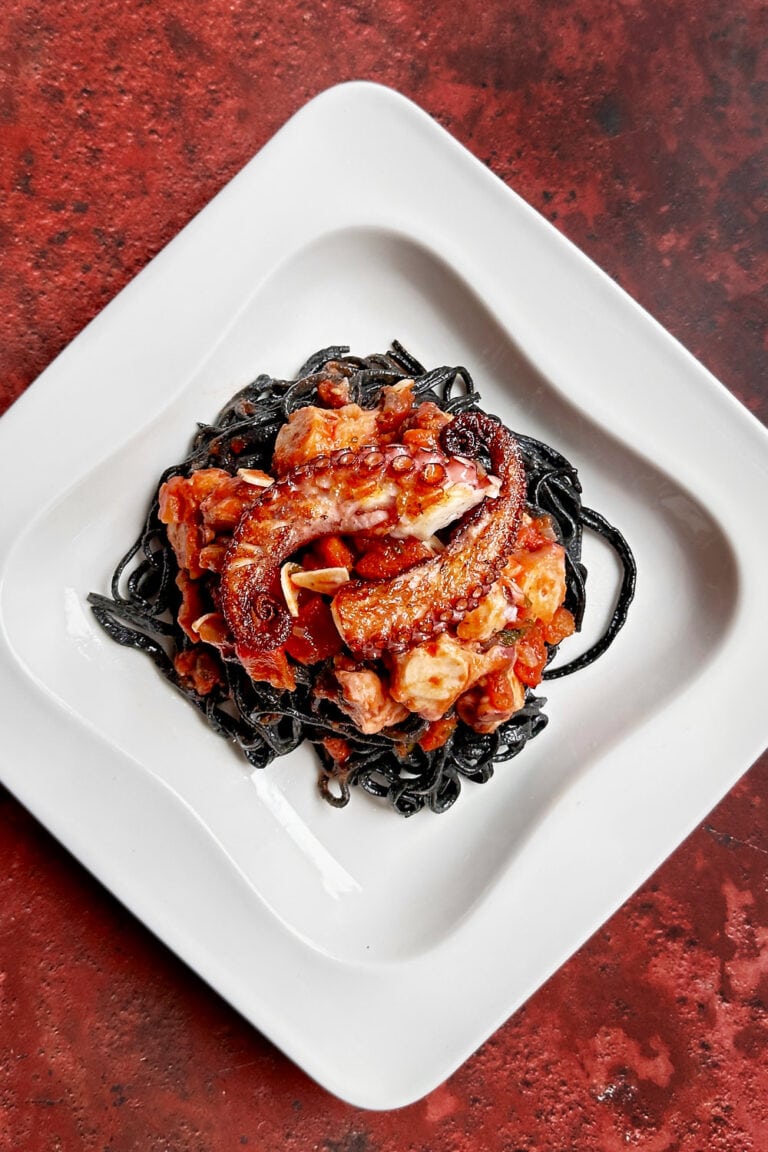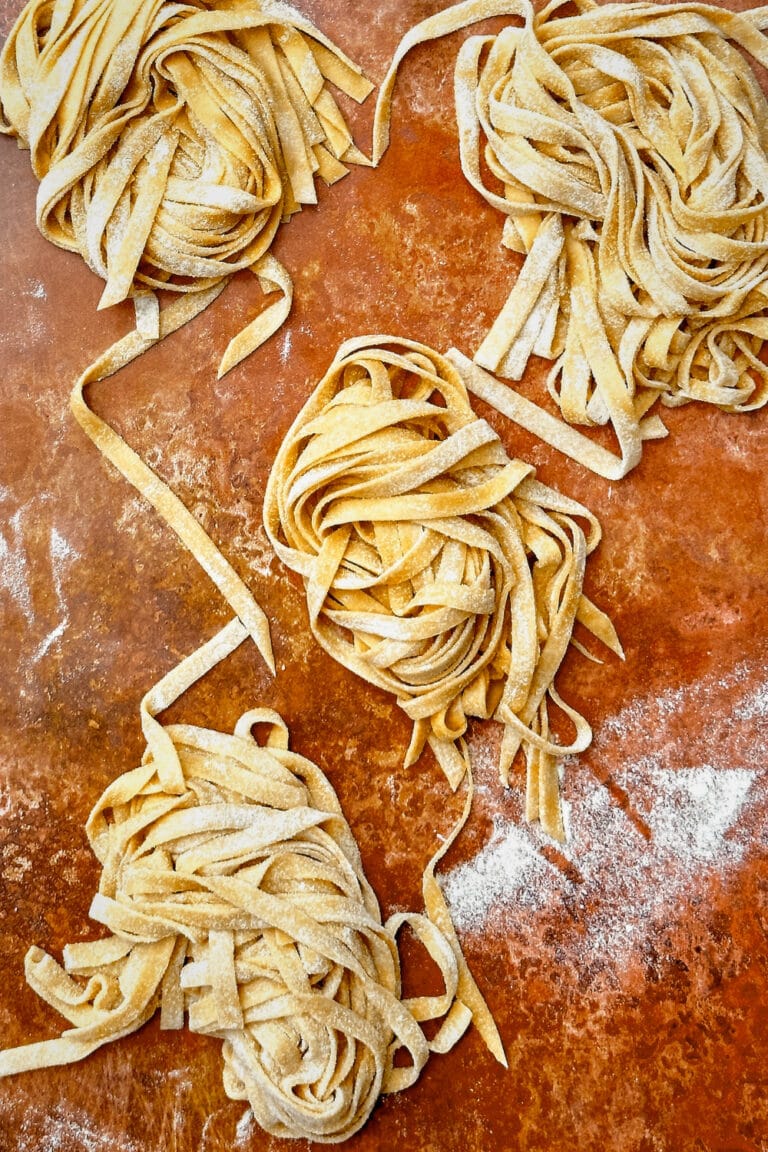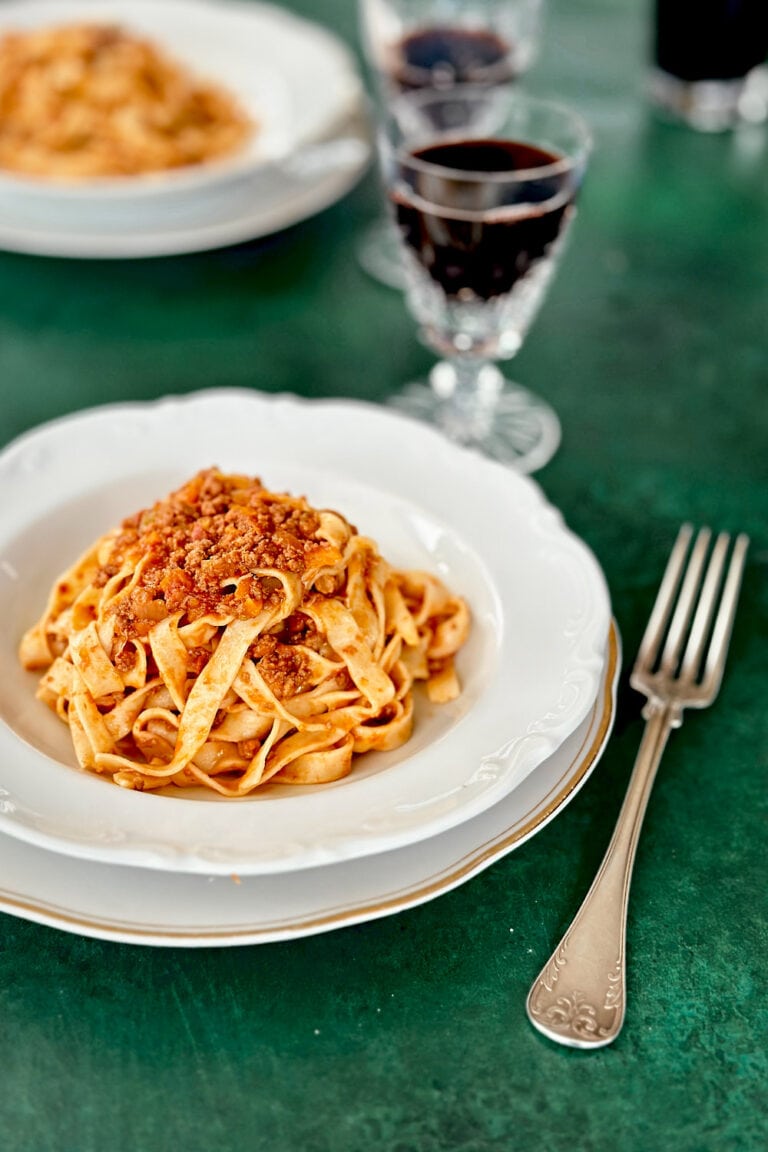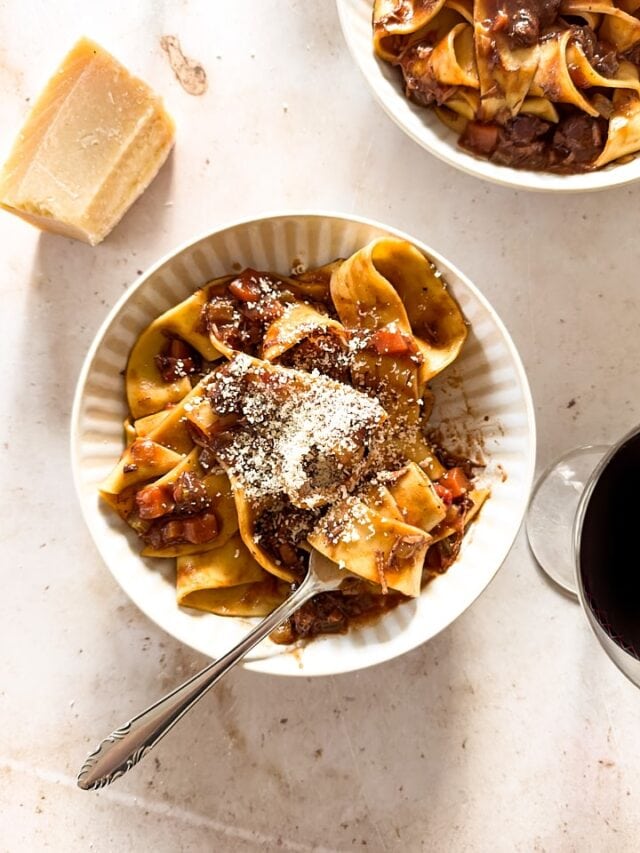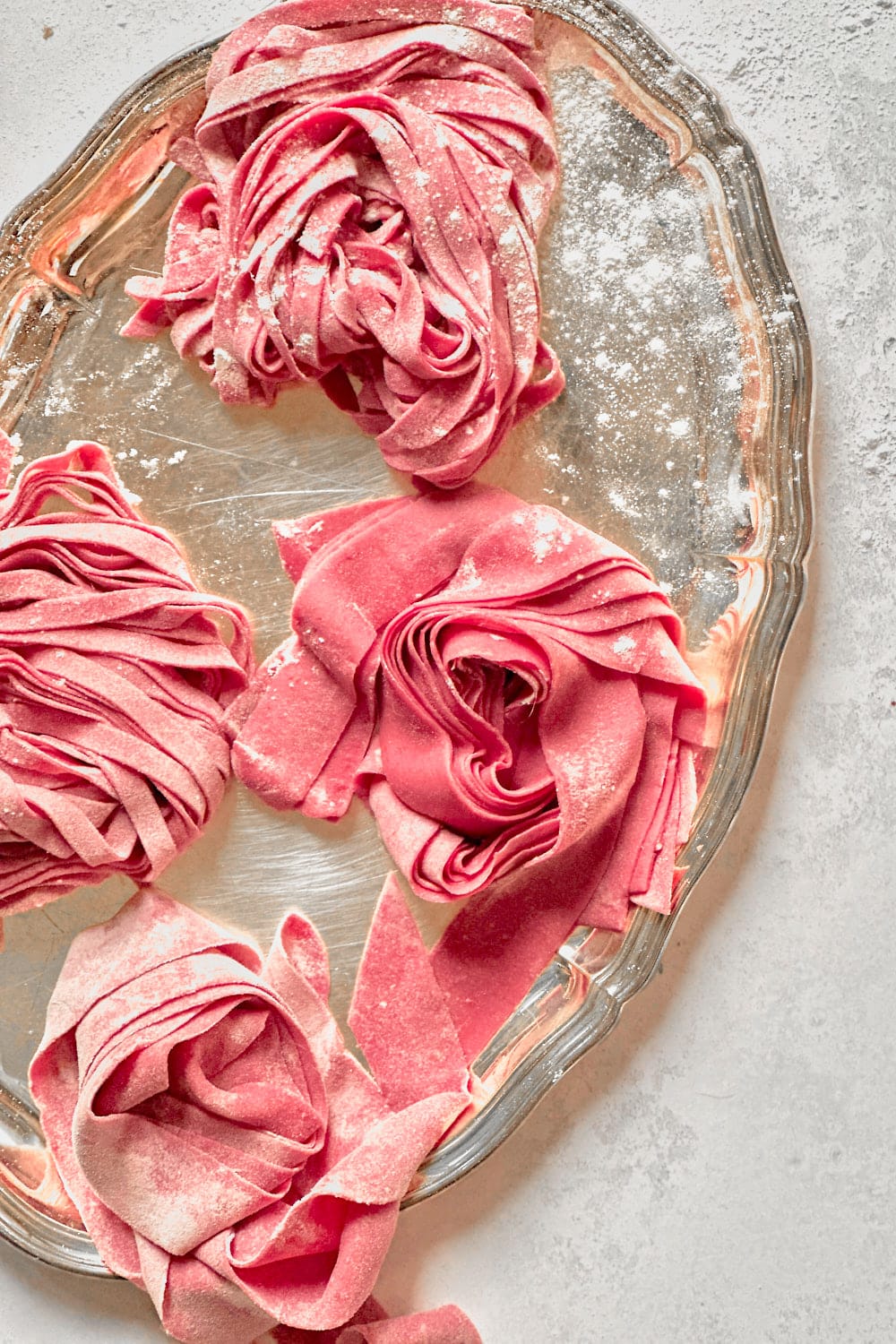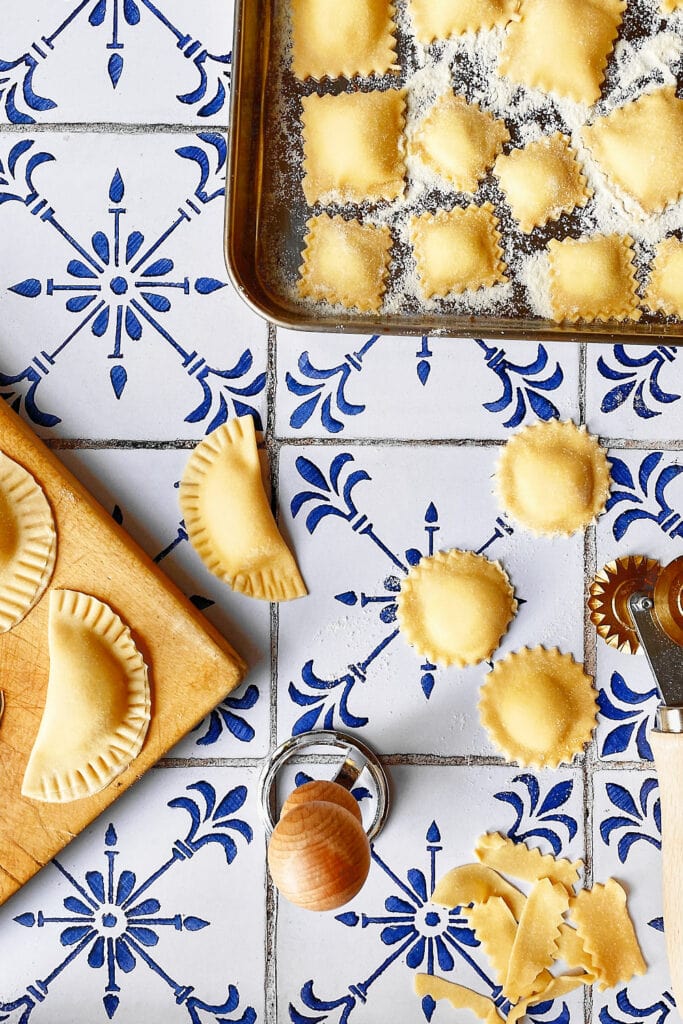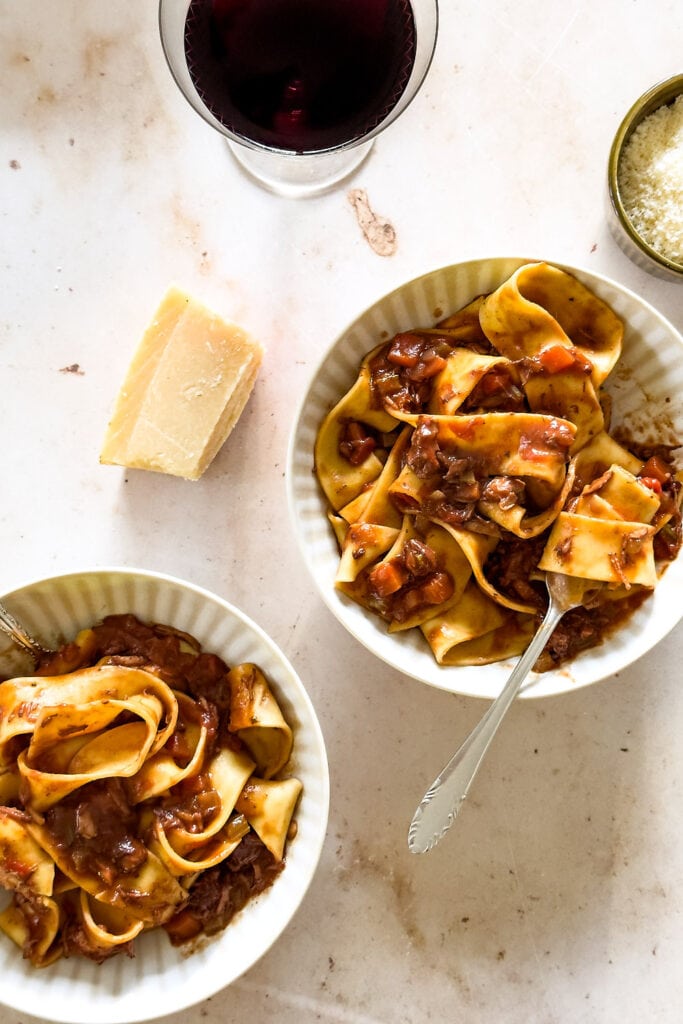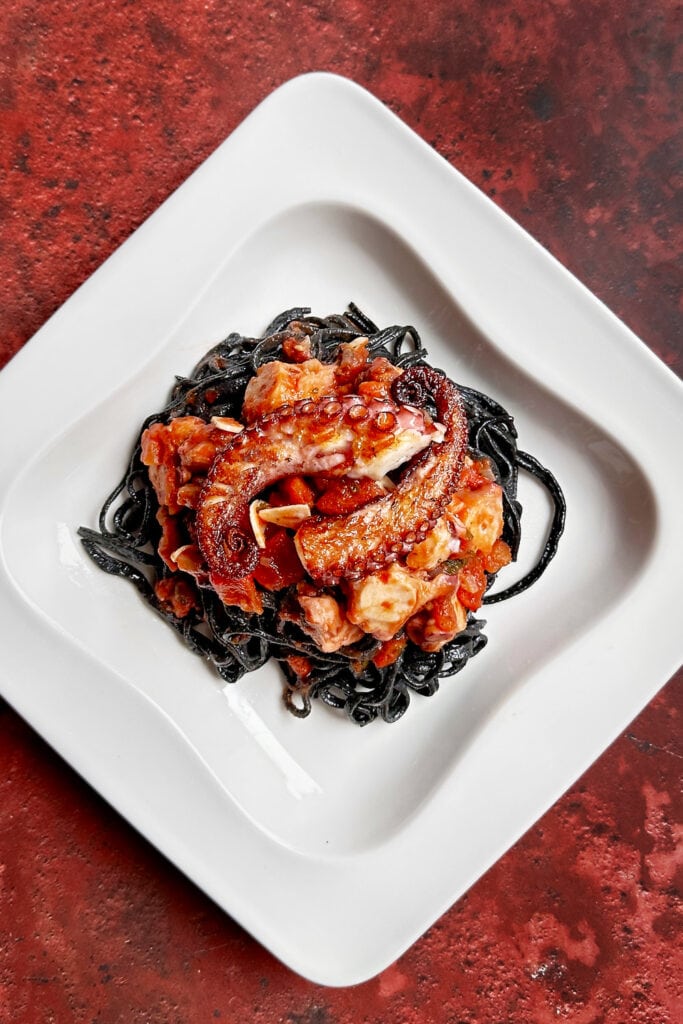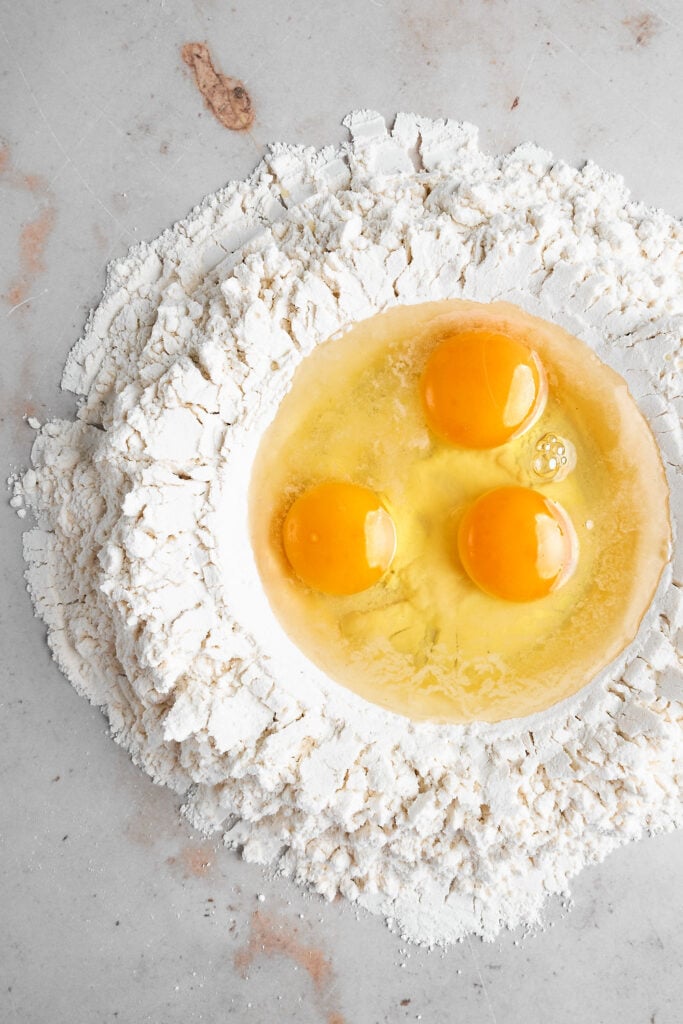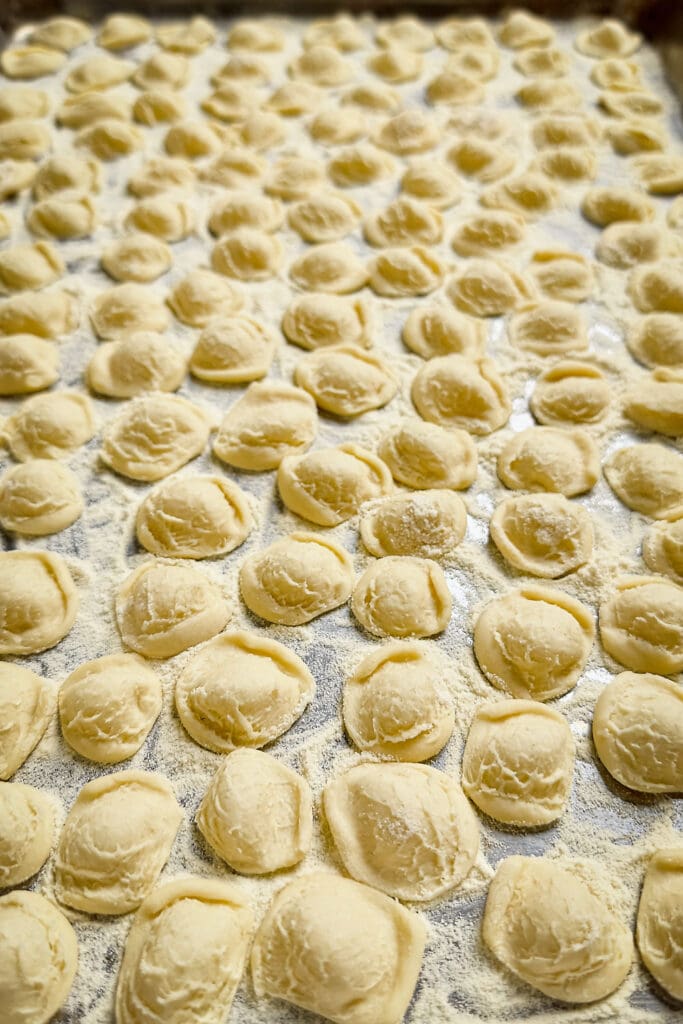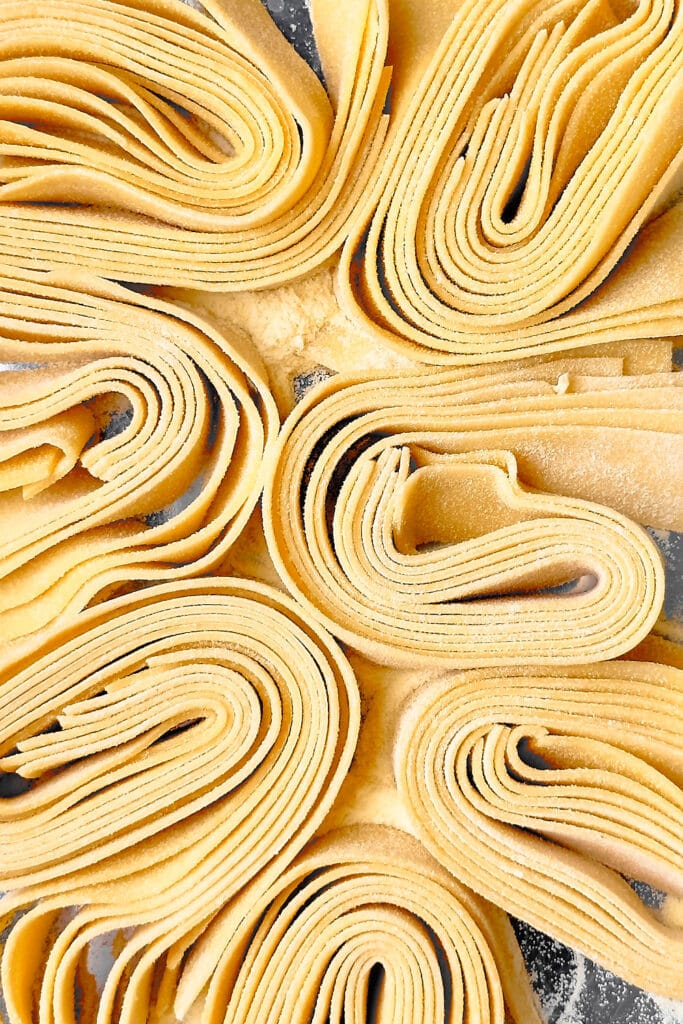How to Make Homemade Squid Ink Pasta
Level up classic egg pasta dough with a bit of squid ink to make beautiful black pasta. Squid ink is a natural food coloring ingredient, giving pasta a unique, dark appearance. While the smell of the ink is quite strong, the flavor is barely noticeable in the final dish. It just adds a bit of salinity. Squid ink pasta pairs nicely with fish or seafood.
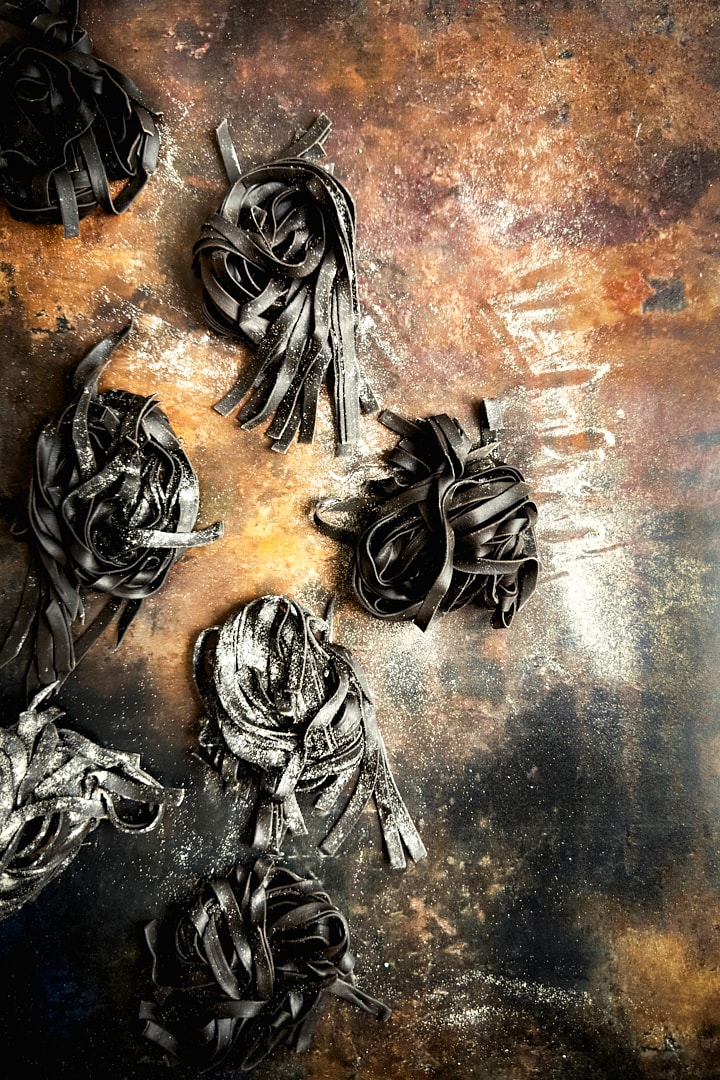
Ingredients and Tools You’ll Need
Fresh egg pasta uses a ratio of 1 egg per 100 g for each person. However, since eggs vary in size and weight, it’s more accurate to weigh the eggs and squid ink first and then calculate the amount of flour you need respectively. The ideal dough hydration is 57% (the total weight of the eggs (plus squid ink) should be 57% of the total flour weight).
Example: The weight of 3 eggs + squid ink = 180 g → 180 g / 0.57 = 315 g. If you use smaller or larger eggs, you have to adjust the amount of flour accordingly.
Step-by-Step Instructions
Step 1
Crack the eggs into a bowl and add the squid ink. Break up the yolks and mix everything together until you end up with a homogenous black liquid. To make the dough, pile the flour on a wooden pasta board or clean work surface and create a well in the center. Pour the egg mixture into the center. Use a fork and carefully mix the flour and eggs in the center of the well. Be careful to not break the flour wall or the liquid will escape. Slowly add more and more flour from the edges until a thick paste forms in the middle. Use a bench scraper to fold in and incorporate the rest of the flour until a shaggy dough forms.
Step 2
Bring everything together with your hands and knead the dough for about 10 minutes. If the dough feels sticky, add a small amount of flour. If it feels dry, lightly wet your hands or work surface and keep kneading. After kneading, the dough should feel very smooth and elastic.
Wrap the dough in plastic wrap and let it rest for at least 30 minutes on the counter or up to 24 hours in the fridge. Let it come back to room temperature before rolling out the dough.
Step 3
Cut off a quarter of the dough and keep the rest well wrapped. Use a pasta machine and roll it out into a thin pasta sheet. Repeat with the remaining dough. Lightly dust both sides of the sheets with semolina flour to prevent sticking. Cut the sheets into ribbons to make tagliatelle or pappardelle. This dough also works great to make homemade ravioli. Store the pasta on a semolina dusted baking tray until ready to cook.
Step 4
Bring a large pot of salted water to a rolling boil. Cook the pasta for about 2-3 minutes, until al dente. Pair with your favorite sauce and enjoy!
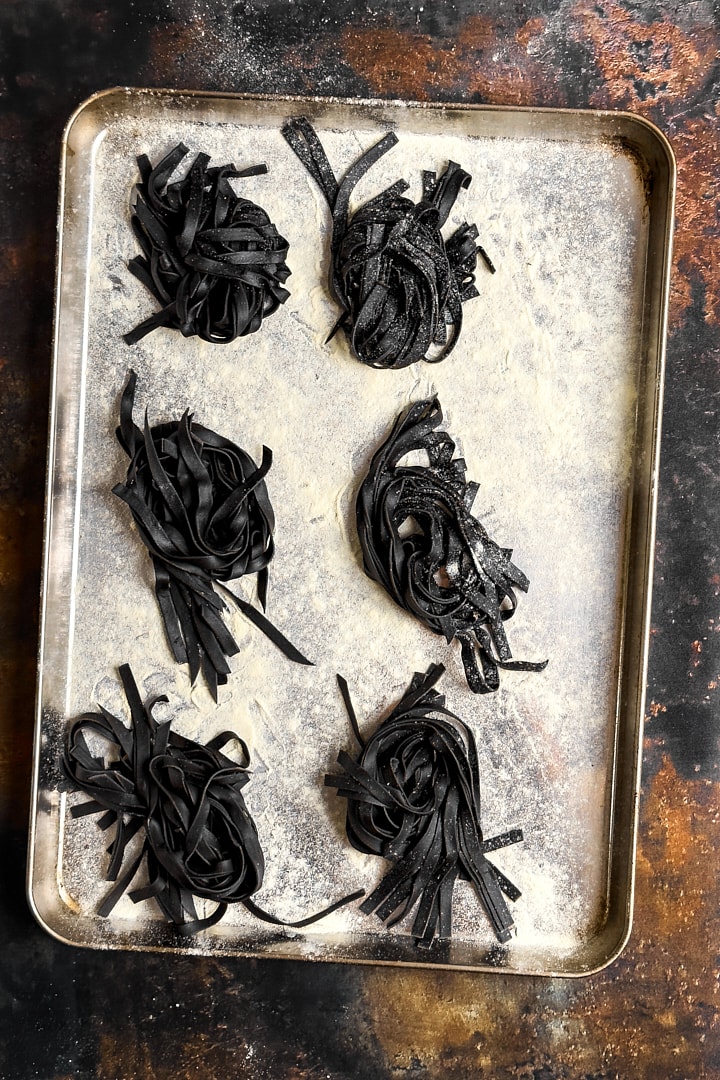
Common Questions About Squid Ink Pasta
More Pasta Recipes You May Like:
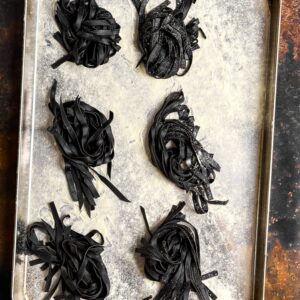
Homemade Squid Ink Pasta
Equipment
- Digital kitchen scale
- fork
- bench scraper
- Wooden pasta board – optional but recommended, as it stays in place and doesn’t slide away during kneading.
- Plastic wrap
- Pasta machine
- Baking tray
Ingredients
- 300 g Flour – Italian "Tipo 00" or all-purpose flour. You can also use a combination of all-purpose flour and finely milled semolina flour
- 3 Eggs – medium-sized
- 2 tsp Squid ink – usually available in small packets or glass jars at specialty food stores, fishmongers or online
Instructions
- Crack the eggs into a bowl and add the squid ink. Break up the yolks and mix everything together until you end up with a homogenous black liquid. To make the dough, pile the flour on a wooden pasta board or clean work surface and create a well in the center. Pour the egg mixture into the center. Use a fork and carefully mix the flour and eggs in the center of the well. Be careful to not break the flour wall or the liquid will escape. Slowly add more and more flour from the edges until a thick paste forms in the middle. Use a bench scraper to fold in and incorporate the rest of the flour until a shaggy dough forms.
- Bring everything together with your hands and knead the dough for about 10 minutes. If the dough feels sticky, add a small amount of flour. If it feels dry, lightly wet your hands or work surface and keep kneading. After kneading, the dough should feel very smooth and elastic. Wrap the dough in plastic wrap and let it rest for at least 30 minutes on the counter or up to 24 hours in the fridge. Let it come back to room temperature before rolling out.
- Cut off a quarter of the dough and keep the rest well wrapped. Use a pasta machine and roll it out into a thin pasta sheet. Repeat with the remaining dough. Lightly dust both sides of the pasta sheets with semolina flour to prevent sticking. Cut the sheets into ribbons to make tagliatelle or pappardelle. This dough also works great to make homemade ravioli. Store the pasta on a semolina dusted baking tray until ready to cook.
- Bring a large pot of salted water to a rolling boil. Cook the pasta for about 2-3 minutes, until al dente. Pair with your favorite sauce and enjoy!
Video
Nutrition
Do you have any questions about this recipe?
Let me know in the comments!
